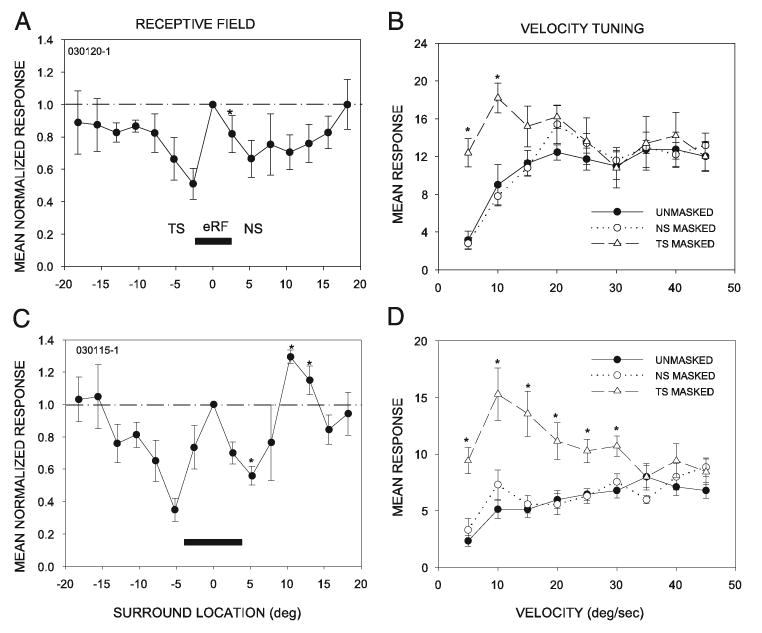Fig. 9.

Masking the temporal surround decreases selectivity of high-pass velocity tuned neurons. Two examples of high-pass neurons, illustrating their receptive field structure (A, C) and the effects of masking (B, D) on velocity tuning. In high-pass neurons, inhibition was present on both sides of the eRF. In contrast to low-pass neurons, masking the NS had no effect on velocity tuning. Masking the TS, however, revealed responses to low-velocity stimuli. Asterisks in A and C show locations where the amount of suppression was significantly different on one side of the RF center than on the other, as in Fig. 2. Asterisks in B and D show significant effects of masking the temporal surround (*P < 0.05).
